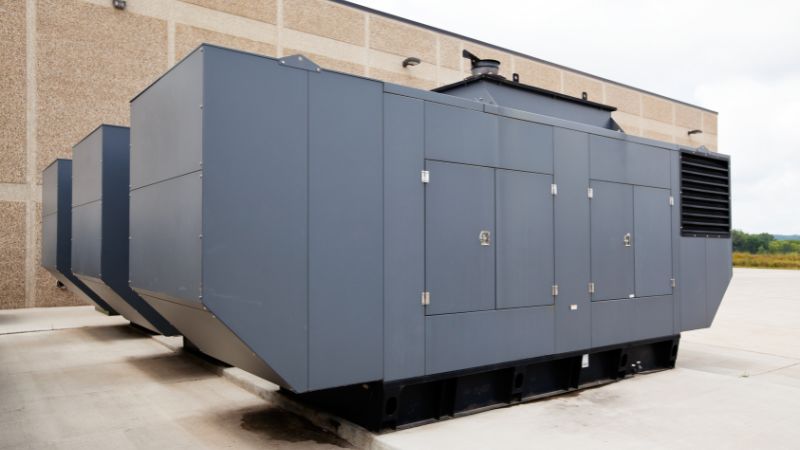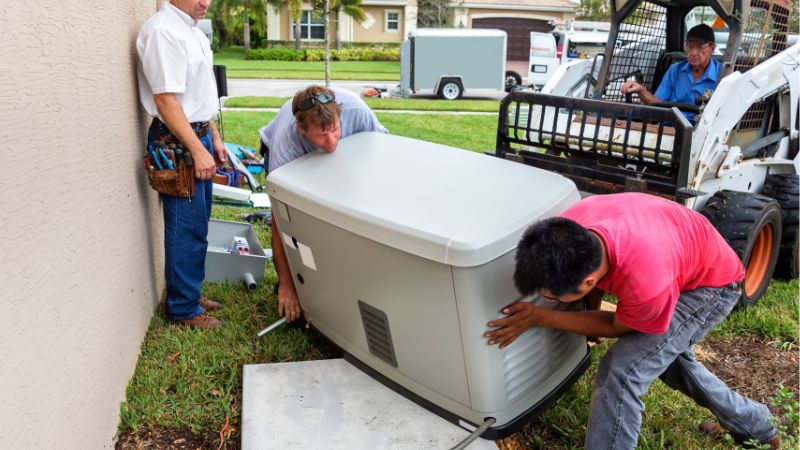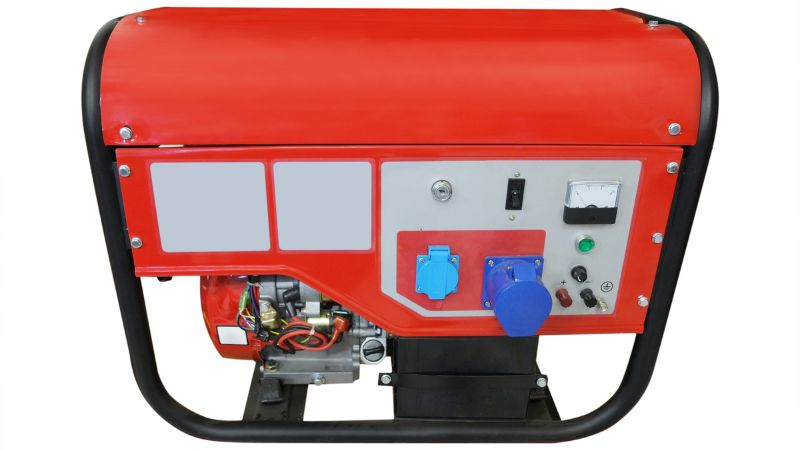Choosing a right backup generator can be tough, especially if you want to keep your home powered during an outage. Let’s break down the pros and cons of portable and standby generators to help you make the best pick.

What Are Portable Generators?
Portable generators are small, moveable machines that give you power when your regular electricity goes out. They are popular for short emergencies, camping trips, or anywhere you need quick and easy electricity.
What Are Standby Generators?
Standby generators are large, powerful machines that are installed outside. They connect directly to your electrical system and can power your whole house or just key circuits.
Unlike portable models, you don’t move these around or store them in your garage. They usually run on natural gas or propane, which means you don’t have to keep refilling them with gasoline.
Portable Generators vs. Home Standby Generators
Portable and standby generators have some important differences. You’ll want to look at what each can deliver for your home before picking the right one.
Here’s a quick comparison:
| Feature | Portable Generator | Standby Generator |
| Cost | Lower initial price (more affordable) | Higher initial investment |
| Setup | Manual setup each use (requires more hands-on work) | Automatic, no need for user action |
| Power Capacity | Powers a few items or small areas | Whole-home backup power (covers everything) |
| Portability | Easy to move | Fixed in place |
| Use Case | Short outages, temporary power | Frequent or long outages, whole-home comfort |
Power Output
Portable generators provide less power because they’re made for running a few key items, not your whole house. Most portable models cap out at a few thousand watts.
Standby generators deliver much more electricity. These are built to power everything in your home running during an outage, including heaters, and air conditioners.
Quick power comparison:
| Generator Type | Typical Power Output | What It Can Run |
| Portable | 1,000-7,500 watts | A few appliances, lights |
| Standby (Whole-house) | 7,500-20,000+ watts | Entire home or most rooms |
Setup and Portability
Portable generators are usually lighter and come with handles or wheels, so you can move them wherever you need backup power. If you travel, camp, or want a unit that you can bring out for different situations, a portable model might work well for you.
Standby generators, on the other hand, are permanently installed outside your home and connect directly to your electrical system and a fuel source. Their fixed location means you do not need to move them or handle heavy equipment once they are installed.
Installation
Setting up a portable generator doesn’t take much. You usually roll it out, add fuel, and plug in what you want to run. There’s not much installation—just make sure it’s outside to avoid carbon monoxide. You may want a transfer switch for safety, but it’s not always required.
Standby generators need a professional install. They connect directly to your home’s electrical system and fuel supply, and they start up automatically when power goes out. Installers usually pour a concrete pad for the unit to sit on.
This setup costs more and takes time, but you don’t have to do anything once it’s up and running.

Usage Scenarios
A portable generator is great for short power outages or camping trips. You can use it in different places, take it with you, and store it away when you’re done. If you only need to run a few things for a few hours at a time, this is a flexible pick.
Standby generators are made for bigger jobs. If you live in an area with frequent or long outages—or you can’t go without power—having a whole-home backup can save your food, keep your house safe, and handle medical or work equipment.
Cost
Most portable generators that are good for home backup start at under $500. Higher-wattage portable units cost up to about $2,000, and these can cover the basics like lights, fridge, and a few electronics.
Standby generators, though, cost much more at the start. A typical whole-house standby generator including installation usually ranges from $5,000 to $15,000.
Fuel Types and Efficiency
Common Fuel Options: Most portable generators run on gasoline or propane. Standby generators usually use natural gas, propane, or diesel.
Runtime and Refueling: Portable generators can run for a few hours to about a day on one tank, depending on fuel type and load. Standby generators connected to natural gas lines can run indefinitely as long as there’s fuel.
Safety Considerations
When using generators, safety should always come first. Both portable and standby generators come with certain risks.
Below is a quick table comparing key safety issues:
| Safety Concern | Portable Generators | Standby Generators |
| CO Poisoning | High risk if used indoors | Low risk if installed properly |
| Electric Shock | Moderate; improper setup can be dangerous | Low if professionally installed |
| Fire Hazard | Risk if overloaded or used incorrectly | Lower with good installation |
Here are a few quick tips:
- Always follow the instructions in your generator’s manual.
- Install battery-operated CO detectors if you use a generator.
- Never plug a generator directly into a wall outlet.
- Keep generators dry to prevent shocks.
Noise Levels
Portable generators are usually much louder than standby generators.
Portable generators produce between 75-90 decibels at a distance of about 23 feet. This is as noisy as a vacuum cleaner or a motorcycle. If you live close to your neighbors, this noise could bother them, especially at night.
Standby generators are much quieter—many have special enclosures to keep the sound down. Standby units are designed to blend into your backyard or alongside your house without drawing attention.

Should You Use a Portable Generator or a Standby Generator?
Portable and standby generators are built for different situations. Your daily habits, budget, and plans for using backup power matter the most when picking the best one.
When to Choose a Portable Generator?
- Short-term power needs: For temporary power during camping trips or outdoor events.
- Limited budget: More affordable than standby generators.
- Flexibility: Can be moved easily to different locations.
- Emergency backup: Quick solution for occasional power outages.
- No permanent installation: No need for professional installation.
When to Choose a Standby Generator?
- Long-term power needs: Continuous power during extended outages.
- Permanent solution: Installed permanently at your home or business.
- Automatic operation: Starts automatically when power is lost.
- Higher power capacity: Can power entire homes or large buildings.
- Professional installation: Requires professional setup for safety and efficiency.
Conclusion
If you want something simple for short outages, go with a portable model. For automatic, whole-house coverage that keeps things running no matter what, a standby system could be your best option. Your choice depends on what matters most to you—price, convenience, and how much power you need.
